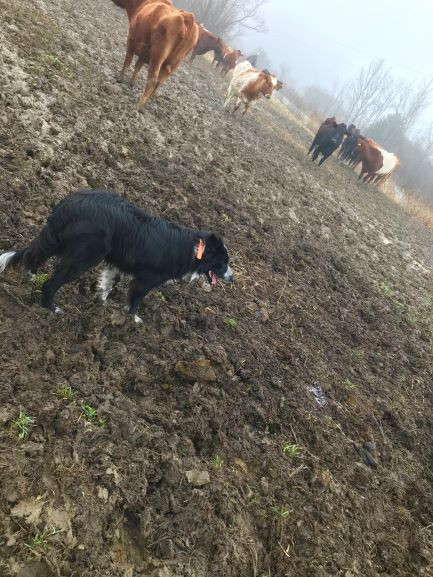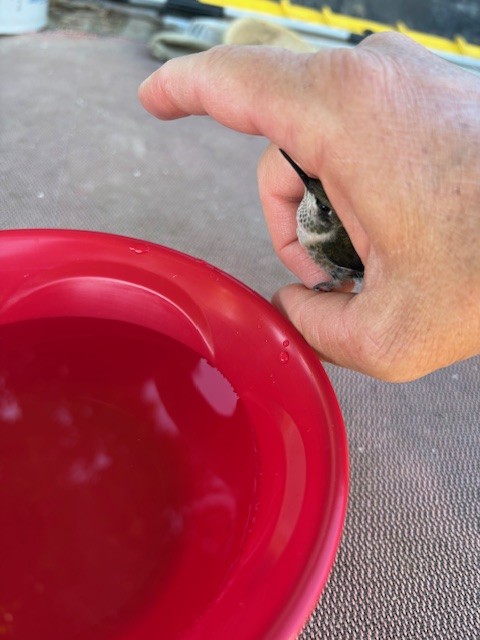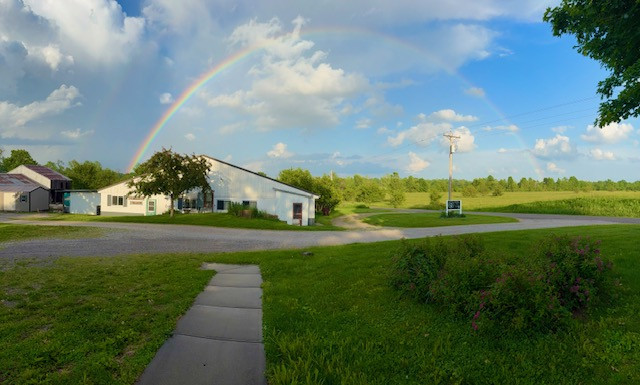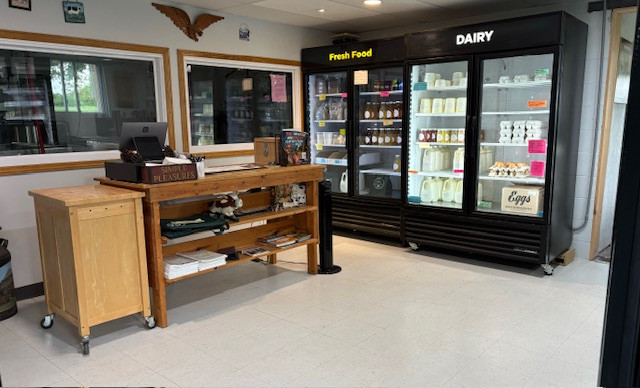What about when it rains? A lot?
posted on
January 15, 2020
Two words would describe the first half of January 2020. Warmish. And mud.
For nearly two decades, we have taken the main herd of cows during their dry period a few miles up the road to another pasture for the winter. Most of this pasture is reclaimed coal mine ground, and because the soil was disturbed during that process, it's not as healthy as it could be. Two of the effects of poor soil structure are intolerance to drought, and ineffective water infiltration and water holding capacity. Rotationally grazing livestock on poor soils has the potential to greatly improve its fertility, so that has been our objective. We have seen many positive changes over the years...some years more so than others. Grazing management decisions plays a critical role in the rate of improvement or lack thereof.

Every winter is different, of course, and temperatures often fluctuate above and below freezing, but the last few years have been particularly challenging with fewer stretches of below freezing temps and significant rainfall events (coupled with colder Novembers, Marches, and sometimes even Aprils!). We have been grazing year-round for quite a long time now. That means rarely are the cows kept in a smaller "sacrifice area" and fed exclusively stored forages during the winter. You might think that super cold weather would be harder for a cow to handle than warm wet winters, but it's really not true. All this chilly rain and mud actually requires more effort from their bodies than cold, frozen ground. And although we try to incorporate flexibility into our management setup, if these kinds of winters are going to be a new norm, winter cow care may have to start looking a little different. Not only are cold, muddy conditions more stressful for the cows' bodies, they are also bad news for soil and pasture health when animals are present.
Many hooves can make much mud. This can temporarily damage soil structure, create compaction, diminish a stand of desirable forages, and lead to the proliferation of weeds (which is simply any plant growing where you don't want it). If you rotationally graze the animals, have plenty of pasture, and keep them moving to a new section regularly the damage can usually be minimized. Because of the drought late last summer, we did not have plenty of pasture, but we've been keeping them moving and trying hard not to let them muck up too much pasture.
This past weekend with extreme rainfall in the forecast, we moved the herd to higher ground to feed them some hay. The good thing is they had high ground to get to. The bad thing is they've been in a relatively small area, going back and forth to the water tanks we fill from the pond, and the result is lots of mud. Much of this pasture will probably recover okay in the spring--along with more weeds, though some areas around the hay bales and water tanks may have only weeds unless we plant something better!
This morning we moved them off the hay back to the pasture they had been in before the deluge came. They were very happy to return to some (albeit short) green grass! As I started to lead them away from the muddy watering area, I noticed a circle of ground where a hay bale had been consumed the year before.

While it might not be the easiest to see here (I am not proud of this picture because I don't like creating mud lots, but it's reality right now!), Silas is standing on the edge of this circle. The soil is a little darker, and it's not nearly as muddy as it is outside of that circle. So what's the secret? Organic matter! The cows did not consume every little piece of that hay bale last year. There was plant litter left on the soil surface. And some cows likely laid on the remnants and added some manure and urine when they got up. This fertilized decaying plant material over the growing season provided food and a hospitable environment to microbes and other beneficial soil life as they turned something dead into something alive. I am not sure what grew there this summer...maybe only a solid stand of asters until we mowed them off. But on January 15th, there was a literal sponge--surrounded by water-logged, once-excavated dirt yearning to become healthy soil.
What if we could keep laying down plant litter (in the form of hay or trampled forage in the summer) every year with the help of a mob of herbivores? What if we increased organic matter and encouraged the building of soil that acted like a sponge and not only absorbed excess rainfall (reducing flooding), but held it longer so that when the rain stopped there would still be moisture to support life and growth for many weeks? What if agriculture helped to heal the soil, the water cycle, and the environment we live in, all while providing nutrient-dense food for human bodies too? We may not have all the answers, and we certainly make mistakes we continually learn from, but these are some of the questions we strive to be a part of answering. Nature is forgiving, like the One who created it. The good news is, there is nothing that can't be healed.





